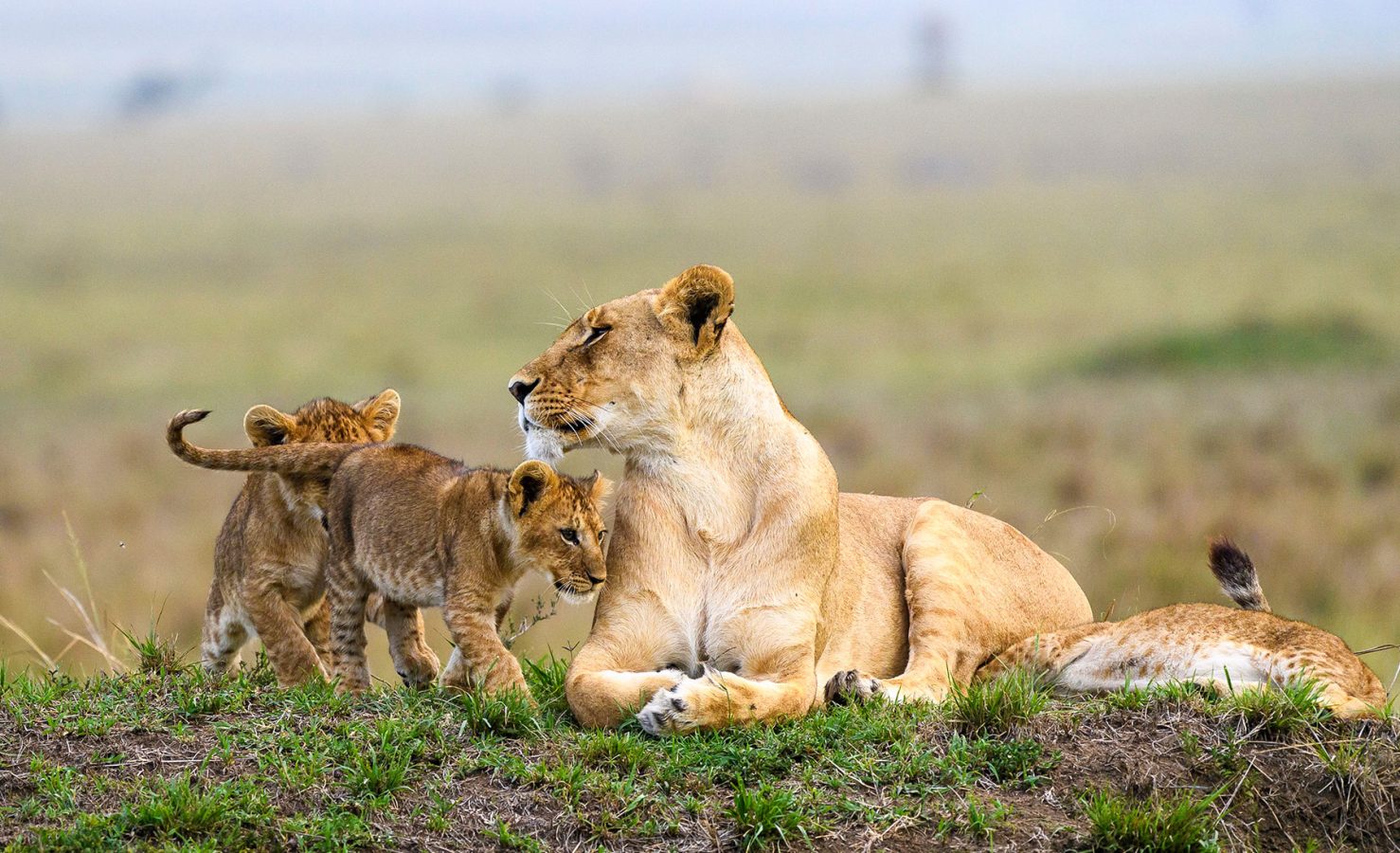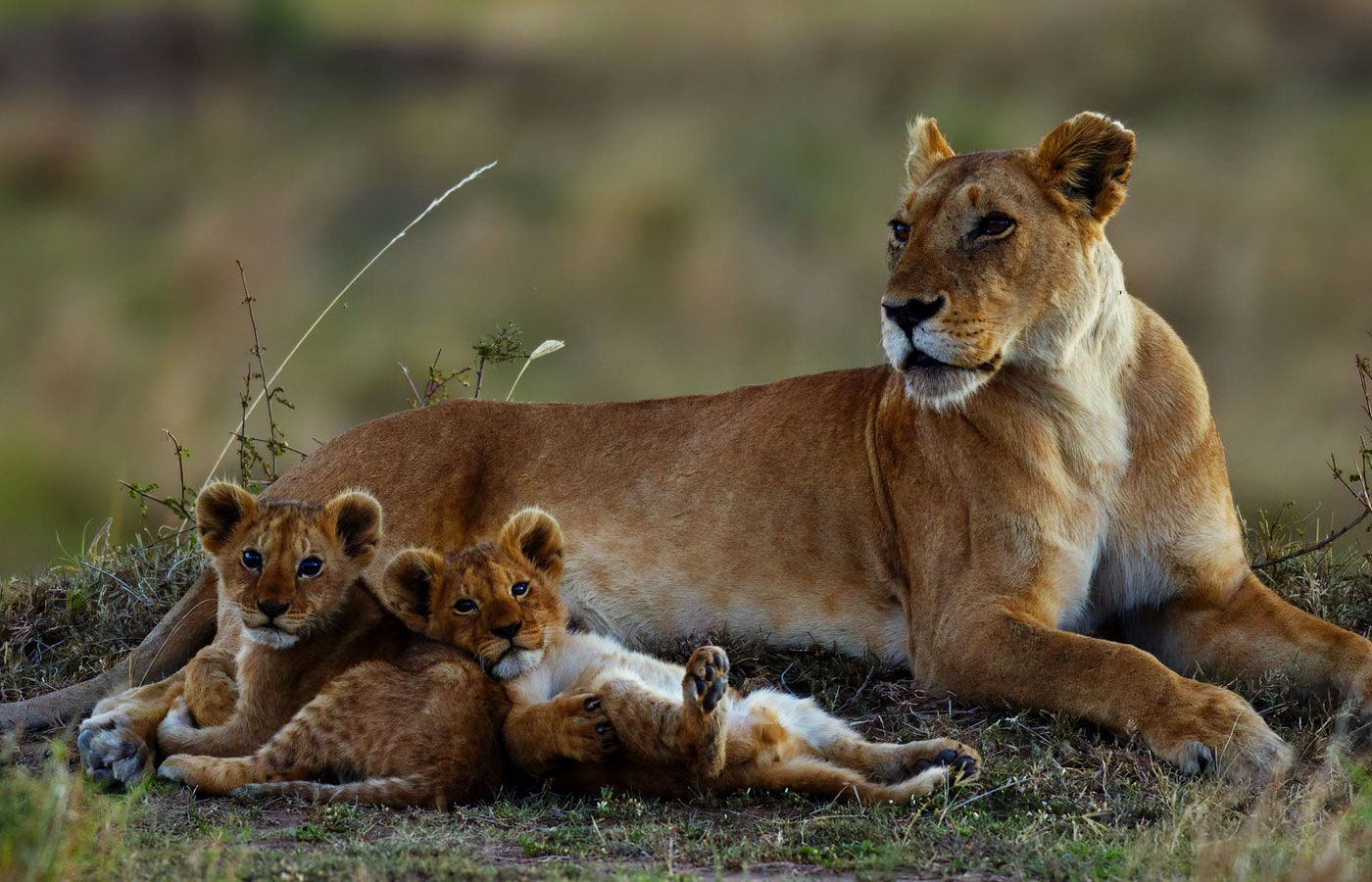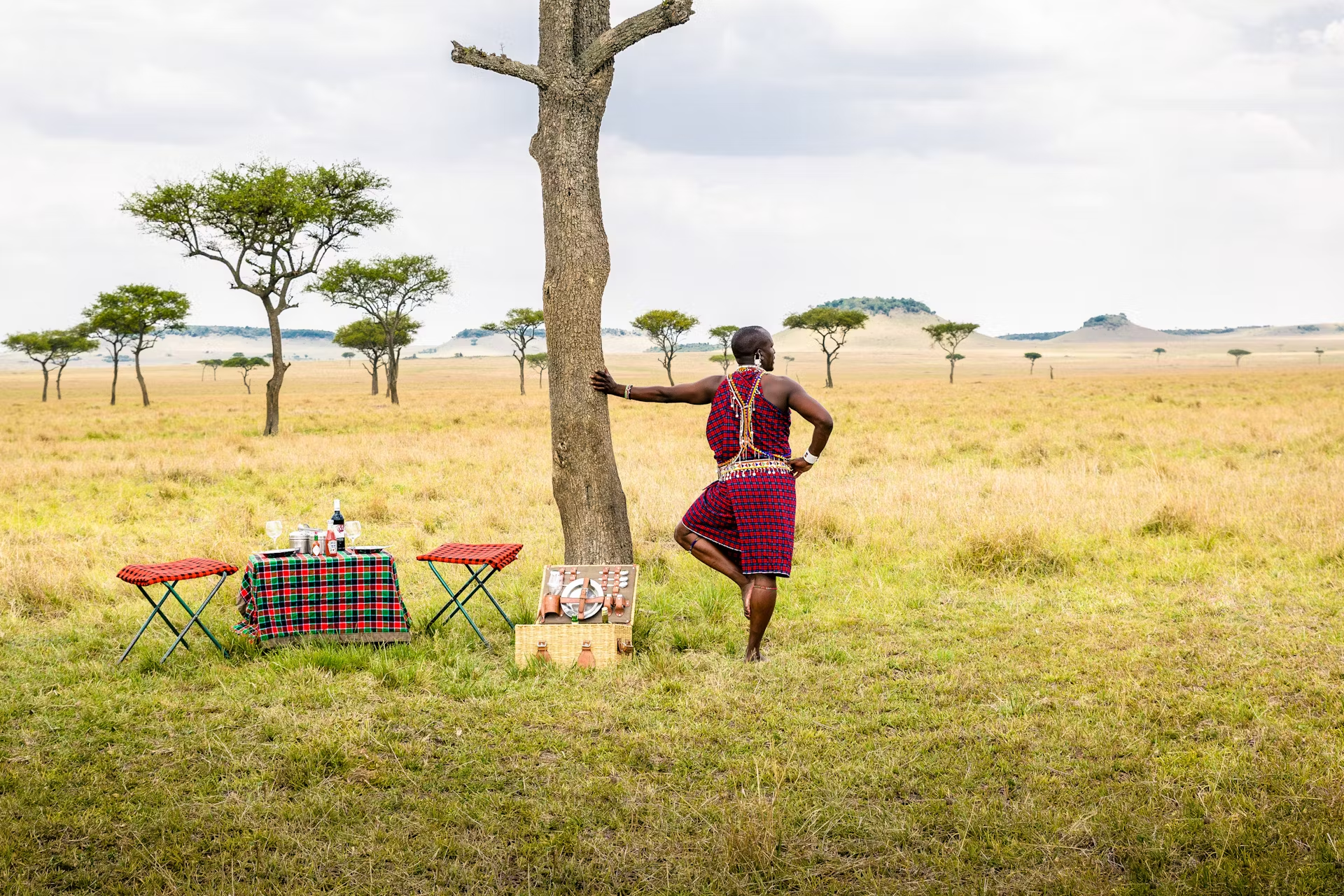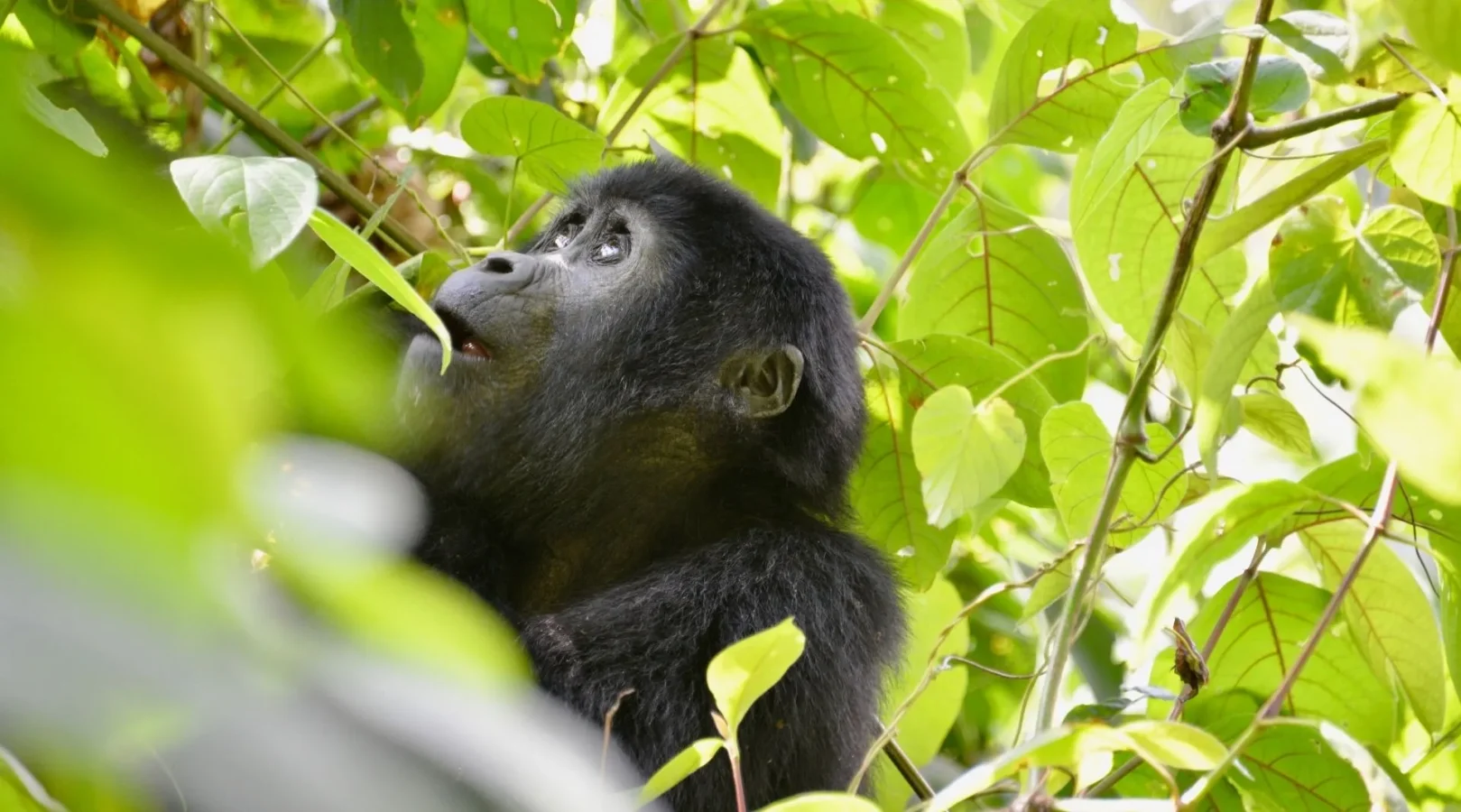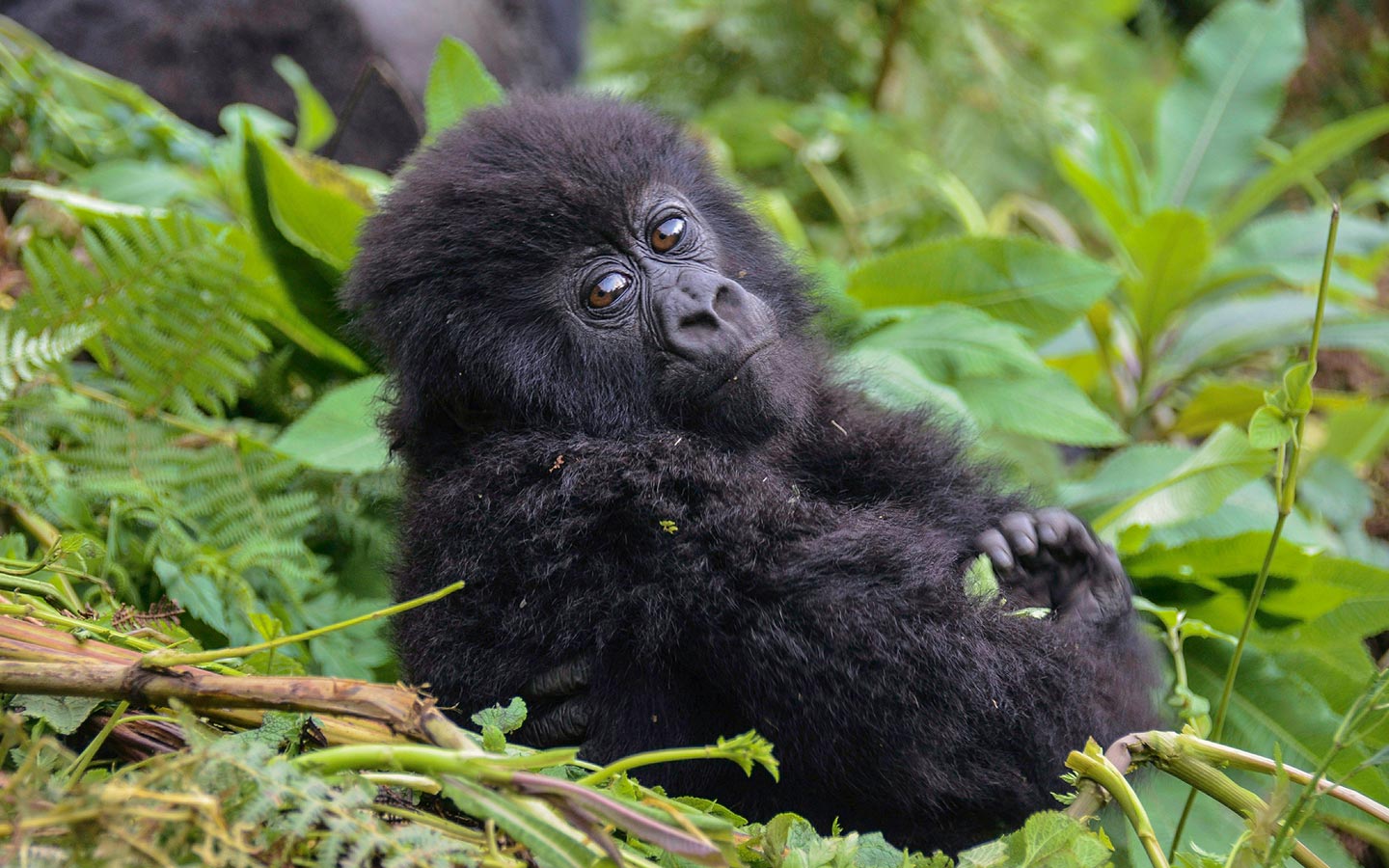Tanzania Safari and Rwanda Gorilla Trekking
The Ultimate African Adventure by Deks Safaris & Tours
Embarking on a Tanzania Safari and Rwanda Gorilla Trekking experience offers a once-in-a-lifetime journey through Africa’s most iconic wildlife and natural wonders. Combining the thrill of a Tanzanian safari with the intimacy of observing mountain gorillas in Rwanda creates an unparalleled adventure that appeals to travelers seeking both excitement and cultural richness. This journey requires careful planning, particularly because of the logistics involved in crossing two countries, acquiring permits, and selecting accommodations that enhance both comfort and proximity to the wildlife.
The allure of this combined adventure lies in its diversity. Tanzania’s savannas host the Big Five and witness the dramatic spectacle of the Great Wildebeest Migration, while Rwanda’s lush Volcanoes National Park offers an intimate encounter with habituated mountain gorillas and other primates. Beyond wildlife, this journey provides access to authentic cultural experiences in local villages near both safari lodges and gorilla trekking sites. With expert guidance from Deks Safaris & Tours, travelers enjoy a seamless and unforgettable African expedition that balances adventure, luxury, and cultural immersion.
Recommended Packages:
Why Choose a Tanzania Safari and Rwanda Gorilla Trekking Experience?
What makes this combination unique? Few African adventures offer both the grandeur of savanna wildlife and the rare opportunity to observe endangered gorillas in their natural habitat. In Tanzania, travelers explore Serengeti National Park, Ngorongoro Crater, and other game-rich landscapes that showcase lions, elephants, leopards, rhinos, and buffalo. Meanwhile, Rwanda provides an intimate trekking experience among the misty mountains of Volcanoes National Park, home to mountain gorillas and golden monkeys.
Combining these destinations is not only about wildlife—it’s about the immersive experience. Visitors gain exposure to diverse ecosystems, from open grasslands to dense rainforests, and can engage in cultural encounters with local communities. By choosing a professional operator like Deks Safaris & Tours, travelers receive expert advice on permits, flight logistics, and accommodations, ensuring a smooth journey across borders. This combination adventure demonstrates both expertise and authority in African tourism, offering a high-value, authentic safari experience.
Planning Your Tanzania and Rwanda Gorilla Trekking Safari: Key Considerations
When is the best time for this adventure?
The ideal period is from June to September, coinciding with Tanzania’s dry season and the peak of the Great Wildebeest Migration, while also providing favorable conditions for gorilla trekking in Rwanda. Planning your trip around these months maximizes wildlife sightings and enhances trekking conditions.
How do your secure gorilla permits?
Gorilla permits are limited and often sell out months in advance. Booking early through Deks Safaris & Tours guarantees access to Volcanoes National Park and ensures the adventure proceeds without disruptions. The current cost for foreign non-residents is approximately $1,500 per permit, which reflects the exclusivity and conservation efforts involved in preserving mountain gorillas.
What logistics should you consider?
Travelers must plan for regional flights between Kigali (Rwanda) and Arusha (Tanzania). Flights, accommodations, and park fees should be factored into the overall budget. Choosing a tour operator specializing in combined safaris and gorilla trekking ensures that transfers, guide services, and accommodation bookings are coordinated efficiently. Customized packages cater to various interests, fitness levels, and luxury preferences.
Rwanda Gorilla Trekking: A Close Encounter with Nature
What Can You Expect During Gorilla Trekking?
Trekking for mountain gorillas in Rwanda offers an unforgettable experience. Visitors hike through lush montane forests for 2–6 hours, depending on the location of the habituated gorilla family. The moment you encounter these gentle giants, a sense of awe and connection with nature envelops you. The trek is physically challenging but immensely rewarding, offering unique photo opportunities and a profound appreciation for conservation efforts.
Can You Experience More Than Gorillas?
Yes, Rwanda offers more than just gorilla trekking. Travelers can participate in golden monkey trekking, an energetic and playful experience that complements the gorilla encounter. Cultural experiences at nearby villages, such as the Gorilla Guardians Village, provide insights into Rwandan traditions, local craftsmanship, and conservation initiatives. These interactions offer a deeper understanding of Rwanda’s communities and enrich the overall safari experience.
How Do Lodges Enhance Your Gorilla Trekking Experience?
Accommodations near Volcanoes National Park combine comfort with proximity to trekking starting points. Many lodges provide luxurious amenities while maintaining eco-friendly practices, ensuring a sustainable tourism experience. Guests can enjoy guided cultural tours, traditional cuisine, and scenic views that connect them with the natural environment. Selecting a lodge through Deks Safaris & Tours guarantees a balance of comfort, convenience, and authenticity.
Tanzania Wildlife Safari: Witness the Majesty of the African Savanna
What Makes Tanzania Safaris Exceptional?
Tanzania offers some of the most iconic safari landscapes in Africa. Serengeti National Park hosts the Great Wildebeest Migration, a dynamic spectacle of millions of animals crossing rivers and plains. Visitors can encounter the Big Five and observe predator-prey interactions in a natural setting. The park’s vastness provides a sense of freedom and immersion unmatched in other safari destinations.
How Does the Ngorongoro Crater Enhance Safari Adventures?
The Ngorongoro Crater is a UNESCO World Heritage Site, renowned for its density of wildlife and breathtaking scenery. A safari in this natural wonder allows visitors to see elephants, lions, and rhinos in a concentrated area. The crater’s unique ecosystem creates excellent opportunities for photography and wildlife observation, making it a must-visit complement to the Serengeti experience.
Can Cultural Experiences Be Part of a Tanzania Safari?
Absolutely. Tanzania offers rich cultural interactions with local Maasai communities near safari lodges. Travelers can learn traditional crafts, witness ceremonial dances, and gain insights into indigenous ways of life. These encounters provide a human dimension to the safari, adding depth and perspective to the wildlife adventure.
Combining Rwanda Gorilla Trekking and Tanzania Safari: What Should You Know?
How Do You Travel Between the Countries?
Travelers usually fly from Kigali, Rwanda, to Arusha, Tanzania, minimizing overland travel and maximizing safari time. Flights are convenient but should be booked in advance to secure the best schedules. Tour operators like Deks Safaris & Tours provide seamless transfers, ensuring that your adventure proceeds smoothly from gorilla trekking to safari exploration.
What Are the Costs and Physical Requirements?
This combination adventure involves higher costs due to gorilla permits, regional flights, and premium accommodations. Gorilla trekking demands a moderate to high fitness level, as forest trails can be steep and muddy. Safari activities generally involve game drives, which are less physically strenuous but require patience and endurance for wildlife spotting.
Can Tours Be Customized?
Yes. Tour packages can be tailored to suit fitness levels, interests, and budget preferences. Options include luxury lodges, mid-range accommodations, and budget-friendly campsites. Customization ensures that each traveler enjoys a personalized experience, from gorilla trekking and wildlife safaris to cultural visits and photography opportunities.
Cultural Experiences Near Safari Lodges and Gorilla Trekking Sites
What cultural encounters enhance your safari and trekking experience?
Visitors can engage in multiple activities that highlight local traditions. Near Volcanoes National Park, cultural tours introduce travelers to Rwandan communities, local crafts, and the conservation efforts of Gorilla Guardians. In Tanzania, Maasai villages offer interactive experiences where visitors learn about cattle herding, traditional dances, and handicrafts. These cultural insights complement wildlife experiences, providing a holistic understanding of East Africa’s landscapes and people.
Why are cultural experiences important for safari travelers?
They enrich the journey by providing context for the landscapes and wildlife encountered. Engaging with local communities fosters respect for traditions, conservation, and sustainable tourism. It also creates memorable interactions that go beyond observing wildlife, making the trip meaningful and transformative.
Detailed Wildlife and Trekking Insights
Mountain Gorillas: A Window into the Wild
Mountain gorilla trekking in Rwanda is one of the most moving wildlife experiences in the world. These endangered primates live high in the volcanic mountains of Volcanoes National Park, where dense forests, misty landscapes, and steep slopes create both challenges and unforgettable rewards. Gorilla families are led by a dominant silverback, who protects the group and ensures cohesion. Around him, adult females care for the young, while juveniles engage in playful behaviors that demonstrate strong social bonds. Observing these creatures up close allows travelers to witness striking similarities between gorilla behavior and human interactions. Guides interpret vocalizations, feeding patterns, and grooming rituals, which highlight the intelligence and complex relationships within these groups.
The trek itself enhances the experience. Hiking for several hours through thick bamboo, rainforest trails, and uneven terrain creates a sense of achievement before encountering gorillas. Once the family is located, visitors are allowed one magical hour in their presence, maintaining strict conservation guidelines to minimize disturbance. Every moment, from eye contact with a silverback to watching infants cling to their mothers, leaves travelers with powerful memories and a deeper respect for wildlife conservation. Beyond the trek, the permit fees contribute directly to protecting gorillas and supporting local communities, ensuring this experience safeguards the future of these rare primates.
Tanzania Wildlife: The Heart of the African Safari
Tanzania is a safari paradise where travelers encounter diverse wildlife across vast, breathtaking landscapes. The Serengeti National Park epitomizes the African safari experience, with its endless plains hosting the legendary Great Wildebeest Migration, often described as the greatest show on Earth. Millions of wildebeest, zebras, and gazelles cross rivers filled with crocodiles, driven by instinct to seek fresh grazing lands. This spectacle provides thrilling predator-prey encounters as lions, cheetahs, and hyenas follow the herds. Early morning drives often reveal predators stalking prey in golden light, while midday highlights grazing elephants, giraffes, and buffalo.
Equally captivating is the Ngorongoro Crater, a UNESCO World Heritage Site and one of the best locations in Africa for wildlife concentration. Here, the Big Five thrive alongside flamingos shimmering in soda lakes and hippos wallowing in marshes. Photographers capture both wide crater panoramas and intimate wildlife portraits in this natural amphitheater. For bird enthusiasts, Tanzania is unmatched, offering sightings of over 500 bird species, from brightly colored bee-eaters and lilac-breasted rollers to majestic raptors circling overhead. Each safari game drive becomes a lesson in ecology as guides explain the delicate balance between predator and prey, migration cycles, and the importance of conservation. For travelers, the Serengeti and Ngorongoro embody the very essence of Africa’s wild beauty.
Gorilla Trekking Tips: Preparing for the Ultimate Adventure
Gorilla trekking requires preparation to ensure comfort and safety in rugged terrain. Travelers should wear layered clothing, as conditions change quickly between cool mornings and humid forest interiors. Sturdy waterproof hiking boots are essential for slippery, muddy trails, while long trousers and gloves protect against nettles and branches. Rain gear is indispensable, as showers are frequent in mountain forests regardless of season. A walking stick, often provided at trekking start points, offers balance on steep or uneven paths.
During the trek, respect for wildlife is crucial. Visitors must maintain a safe distance from gorillas to prevent disease transmission and stress on the animals. Time with gorilla families is strictly limited to one hour, ensuring minimal human impact. Photography is allowed, but flash must never be used. Travelers should pack water, snacks, and lightweight gear, as treks can last several hours. Physical preparation, such as light hiking before the trip, enhances endurance for challenging climbs. Listening carefully to ranger instructions ensures both safety and enriching encounters. By following these tips, gorilla trekking becomes not only safe but also profoundly rewarding, offering a unique window into the lives of one of the world’s most endangered species.
Extended Cultural and Dining Experiences
Rwanda: A Journey Through Flavor and Heritage
Rwanda offers more than gorilla trekking; it provides opportunities to savor local cuisine and immerse in vibrant traditions. Traditional meals include Ugali, a maize-based dish served with vegetables, meats, or sauces. Roasted plantains and river fish, often seasoned with regional spices, reflect the flavors of local farming and fishing practices. Dining experiences at lodges often blend Rwandan recipes with international influences, creating memorable meals after long treks.
Cultural immersion is equally rewarding. Visits to the Gorilla Guardians Village allow travelers to learn about traditional Rwandan lifestyles through interactive experiences. Guests may try basket weaving, banana beer making, or listening to stories from community elders. Traditional music and energetic Intore dances provide an authentic glimpse into the country’s heritage. Participation in community projects supports local livelihoods and strengthens the bond between conservation and cultural preservation. By blending trekking adventures with local gastronomy and heritage, Rwanda ensures travelers leave with a holistic sense of place, rooted in both people and nature.
Tanzania: Flavors of the Savannah and Maasai Traditions
Tanzania combines safari thrills with culinary and cultural enrichment. Lodges and camps use fresh, locally sourced ingredients to prepare traditional dishes like Nyama Choma (grilled meat), spiced stews, and vibrant salads made from tropical fruits and vegetables. Morning safari breakfasts often include fresh juices, pastries, and coffee grown in Tanzania’s highlands, while dinners feature multi-course feasts under starry skies. Bush dining experiences create magical moments where meals are served in the heart of the savanna, surrounded by the sounds of the wild.
Cultural immersion adds depth to safari days. Visits to Maasai villages introduce travelers to pastoral traditions, colorful shukas, beadwork, and storytelling rituals. Guests may witness traditional dances that celebrate warriorhood and community life. Other cultural activities include learning cattle herding practices or participating in craft-making sessions that highlight the artistry of Maasai women. These encounters emphasize the resilience and identity of Tanzania’s indigenous groups while supporting community-based tourism. Combining flavorful dining with immersive cultural interactions ensures that travelers connect not only with Tanzania’s landscapes but also with its people.
Why Wildlife, Culture, and Gastronomy Matter Together
Travelers often arrive in East Africa focused on wildlife, but it is the combination of wildlife, culture, and cuisine that creates the most lasting memories. Dining on local dishes after a trek, participating in cultural rituals, and listening to guides explain ecosystems foster deeper engagement. These activities transform a safari from a simple trip into an immersive journey, blending adventure, heritage, and flavor. They also strengthen responsible tourism by supporting local communities and creating shared appreciation between visitors and residents. Ultimately, combining these elements provides a holistic connection to East Africa, ensuring experiences resonate long after returning home.
Travel Tips, Health, and Safety Advice
Traveling across Rwanda and Tanzania requires careful preparation to ensure safety, comfort, and enjoyment. Health is a priority: visitors should carry malaria prophylaxis, receive required vaccinations such as yellow fever, and bring hand sanitizer for treks and game drives. Staying hydrated during long days outdoors is essential, particularly in Tanzania’s hot savannas. Lightweight, breathable clothing helps manage heat, while a hat, sunglasses, and sunscreen offer additional protection.
Packing essentials include binoculars for wildlife observation, a camera with zoom lens for photography, and insect repellent to guard against bites. For gorilla trekking, trekking poles, gloves, rain jackets, and waterproof bags are highly recommended. Safety depends on respecting guides’ instructions, avoiding sudden movements, and maintaining distance from wildlife. Border crossings require passports, gorilla permits, and vaccination records for smooth travel.
Preparation ensures travelers maximize their adventure while avoiding unnecessary challenges. With thoughtful planning and guidance from Deks Safaris & Tours, visitors can confidently explore Rwanda and Tanzania, knowing that health, safety, and comfort are prioritized throughout their journey.
Frequently Asked Questions (FAQ) – Tanzania Safari and Rwanda Gorilla Trekking
How can I combine a Tanzania safari with Rwanda gorilla trekking?
Combining a Tanzania safari with Rwanda gorilla trekking is an exceptional way to experience East Africa’s most iconic wildlife and landscapes in one trip. The journey typically begins with a gorilla trek in Volcanoes National Park, Rwanda, followed by a safari in Tanzania’s renowned wildlife destinations, such as Serengeti National Park and Ngorongoro Crater. Traveling between the two countries involves either short regional flights or carefully planned road transfers, which can be complicated without professional assistance.
Booking with an experienced tour operator like Deks Safaris & Tours ensures seamless coordination of flights, permits, accommodations, and safari guides. Tour operators also help design itineraries that maximize wildlife sightings and trekking opportunities while minimizing transit time. This professional support allows travelers to focus on immersive wildlife experiences, cultural engagement, and scenic landscapes without worrying about logistics.
What is the best time for gorilla trekking and safaris?
The ideal period to combine gorilla trekking and Tanzania safaris is between June and September, which coincides with the dry season in both Rwanda and Tanzania. Dry conditions make trekking through the lush rainforest of Volcanoes National Park more manageable and comfortable. During this time, trails are less muddy, visibility is better, and gorillas are easier to locate. Simultaneously, Tanzania experiences peak wildlife activity during the Great Wildebeest Migration, offering travelers the chance to witness this awe-inspiring spectacle.
The dry season also allows for longer game drives and better photography opportunities as animals congregate near water sources. Travelers visiting during these months enjoy ideal temperatures, fewer rain interruptions, and optimal conditions for cultural excursions and guided walks. While some prefer visiting during the short rainy season for fewer crowds and lush landscapes, June to September remains the most favorable window for combining both gorilla trekking and safari adventures.
How much do gorilla permits cost?
Gorilla permits are an essential requirement for trekking in Rwanda’s Volcanoes National Park and are designed to support conservation efforts and local communities. For foreign non-residents, permits currently cost around $1,500 per person. This fee grants access to a one-hour, guided encounter with a habituated gorilla family and contributes directly to the protection of endangered mountain gorillas. The high cost reflects the permit’s exclusivity, limited availability, and the vital role it plays in conservation initiatives.
Permits often sell out months in advance, particularly during peak trekking seasons, so early booking is essential. For travelers planning a combined safari and gorilla trekking itinerary, tour operators like Deks Safaris & Tours can secure permits in advance and assist with planning to ensure that trekking experiences align perfectly with safari schedules.
Can I experience local culture on this trip?
Absolutely. One of the most enriching aspects of combining a Tanzania safari and Rwanda gorilla trekking adventure is the opportunity to engage with local communities and immerse yourself in cultural traditions. In Rwanda, travelers can visit the Gorilla Guardians Village and participate in activities such as basket weaving, banana beer brewing, and traditional dance performances. These interactions provide insight into Rwandan daily life, customs, and conservation initiatives.
In Tanzania, cultural encounters often include visits to Maasai villages, where guests learn about pastoralist lifestyles, traditional attire, and beadwork. Travelers may witness or participate in ceremonies, storytelling sessions, and communal dances. Culinary experiences complement these cultural interactions, allowing travelers to enjoy dishes prepared from locally sourced ingredients, including Nyama Choma, stews, and tropical fruits. These cultural experiences are designed to deepen understanding of the local people and their connection to the environment, making the journey both immersive and meaningful.
Are these adventures physically demanding?
The level of physical activity depends on the type of excursion. Gorilla trekking in Rwanda is moderately demanding, requiring hikers to navigate steep, uneven, and sometimes muddy forest trails. Treks can last between 2 to 6 hours, depending on the gorilla family’s location. Participants should have reasonable fitness levels, wear appropriate trekking shoes, and bring water, snacks, and hiking poles if needed.
Tanzania safaris, on the other hand, are less physically demanding. Game drives take place in comfortable 4×4 vehicles, allowing travelers to explore vast savannas and observe wildlife with minimal exertion. However, early morning and late afternoon drives may involve long hours in the vehicle, so comfort, hydration, and layered clothing are important. By preparing physically and following expert guidance, travelers can enjoy the combined adventure safely and comfortably.
Can the itinerary be customized?
Yes, itineraries for a Tanzania safari and Rwanda gorilla trekking journey can be fully customized to match travelers’ interests, budgets, and timeframes. Tour operators like Deks Safaris & Tours offer options ranging from luxury lodges and boutique camps to mid-range and budget accommodations.
Travelers can choose the number of days spent in each location, the type of game drives or trekking experiences, and additional activities such as cultural tours, hot air balloon safaris, or golden monkey trekking. Customization ensures that each journey aligns with personal preferences, whether the focus is wildlife photography, cultural immersion, or a balanced combination of both.
What wildlife will I see in Tanzania?
Tanzania is home to some of Africa’s most iconic wildlife species, making it a premier destination for Tanzania Wildlife Safaris. Travelers can expect to see the Big Five—lion, elephant, buffalo, leopard, and rhino—across Serengeti plains and Ngorongoro Crater. During the Great Wildebeest Migration, millions of wildebeest, zebras, and gazelles traverse the savanna, often accompanied by crocodile and predator encounters along river crossings.
Other common sightings include giraffes, hippos, cheetahs, hyenas, baboons, and antelope species. Birdwatchers can enjoy over 500 bird species, ranging from colorful bee-eaters and hornbills to majestic eagles and vultures. Every game drive offers unique wildlife encounters, often changing by season and location, making each safari experience different and memorable.
Conclusion about Tanzania Safari and Rwanda Gorilla Trekking Journey
A Tanzania Safari and Rwanda Gorilla Trekking journey delivers one of the most extraordinary experiences in Africa. From the misty forests of Rwanda, where gorillas thrive, to Tanzania’s Serengeti plains alive with migration herds, the adventure provides unmatched wildlife encounters. Cultural immersion and authentic dining experiences add richness, allowing travelers to connect deeply with East Africa’s landscapes and people.
With expert planning by Deks Safaris & Tours, travelers enjoy seamless logistics, comfortable lodges, and responsible travel practices that enhance conservation and support communities. By combining wildlife exploration, cultural heritage, and gastronomy, this curated adventure ensures transformative memories that last a lifetime. It is the ultimate African journey for those who seek authenticity, luxury, and profound connection with nature.

